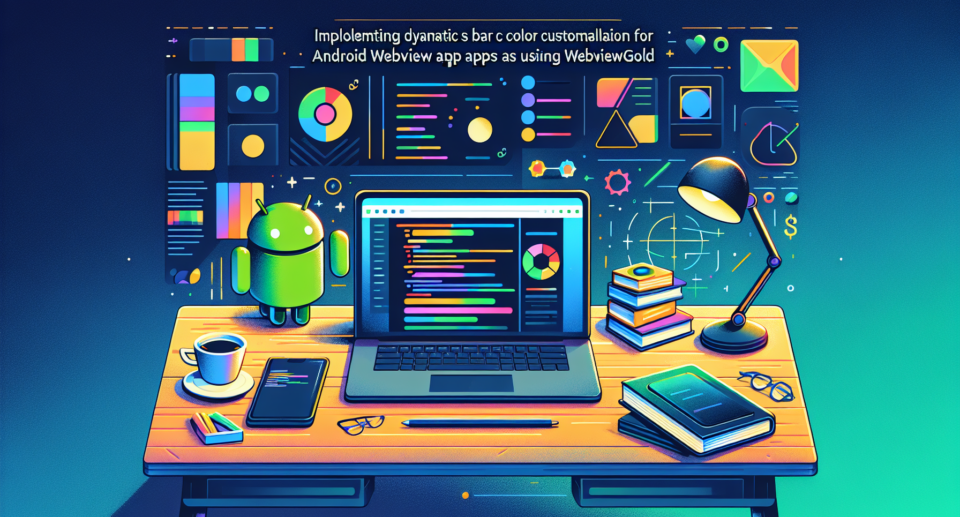Implementing Dynamic Status Bar Color Customization for Android WebView Apps Using WebViewGold

Introduction
In the fast-evolving world of Android app development, creating a visually appealing and user-friendly interface is paramount. One component that often goes overlooked in WebView apps is the status bar color. This small detail can make a significant difference in the overall user experience. In this article, we’ll explore how to implement dynamic status bar color customization for Android WebView apps using WebViewGold.
Why Customize the Status Bar Color?
Customizing the status bar color allows developers to create a seamless visual experience by matching the status bar with the app’s content. This can enhance the aesthetic appeal and ensure that the app looks polished and professional. Furthermore, it can help in branding efforts by aligning the status bar color with the app or company’s color scheme.
What is WebViewGold?
WebViewGold is a powerful tool designed to convert your website into a fully functional Android app quickly and effortlessly. It offers a plethora of features and customization options, making it an excellent choice for developers looking to create high-quality WebView apps. With WebViewGold, tasks that typically require deep coding knowledge become straightforward and accessible.
Steps to Implement Dynamic Status Bar Color Customization
1. Preparation
First, you need to have WebViewGold set up and running on your system. If you haven’t already converted your website into an app using WebViewGold, follow the simple instructions provided by WebViewGold to get your project started.
2. Enable JavaScript in WebView
Ensure that JavaScript is enabled in your WebView settings, as we will use JavaScript to communicate between the web content and the native Android code.
“`java
webView.getSettings().setJavaScriptEnabled(true);
“`
3. Add JavaScript Interface
Create a JavaScript interface to enable communication between your web content and Android code.
“`java
public class WebAppInterface {
Context mContext;
WebAppInterface(Context c) {
mContext = c;
}
@JavascriptInterface
public void changeStatusBarColor(String color) {
runOnUiThread(new Runnable() {
@Override
public void run() {
Window window = getWindow();
window.clearFlags(WindowManager.LayoutParams.FLAG_TRANSLUCENT_STATUS);
window.addFlags(WindowManager.LayoutParams.FLAG_DRAWS_SYSTEM_BAR_BACKGROUNDS);
window.setStatusBarColor(Color.parseColor(color));
}
});
}
}
“`
4. Bind JavaScript Interface
Bind the JavaScript interface to the WebView.
“`java
webView.addJavascriptInterface(new WebAppInterface(this), Android);
“`
5. Trigger Status Bar Color Change from JavaScript
Use JavaScript in your web content to call the method that changes the status bar color.
“`javascript
function setStatusBarColor(color) {
if (window.Android) {
window.Android.changeStatusBarColor(color);
}
}
“`
Call this function from your
